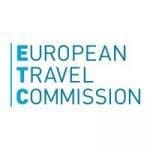As the summer season approaches, over 50% of respondents in China, Brazil, Australia, Canada, and the US expressed optimism about travelling overseas. Among them, Europe remains a top choice for long-haul trips in May-August 2023. Nearly half of those planning to visit the region are repeat visitors, indicating Europe’s ability to cultivate a positive reputation, satisfy travellers, and entice them to return.
travelling overseas. Among them, Europe remains a top choice for long-haul trips in May-August 2023. Nearly half of those planning to visit the region are repeat visitors, indicating Europe’s ability to cultivate a positive reputation, satisfy travellers, and entice them to return.
However, affordability has become a key consideration for travellers, with 32% of respondents saying that they will choose their next European holiday spot based on the cost of experiences offered at the destination.
This is according to the latest Long-Haul Travel Barometer (LHTB) 2/2023 published today by the European Travel Commission (ETC) and Eurail BV. The LHTB measures intention in large overseas markets (Australia, Canada, Brazil, China, Japan, and the US) to travel long-haul and specifically to Europe. The latest issue covers the period May-August 2023. The results are based on a robust sample size of 1000 respondents per market, which is representative of the travel population in the country.
Commenting following the publication of the LHTB 2/2023, Miguel Sanz, ETC’s President, said: “It is encouraging to see long-haul markets slowly but surely recovering, with China finally open to the world. However, Europe must be wary of other challenges we face as an industry, namely inflation and the cost of living. As we can see from this research, affordability has become a key issue for travellers planning to visit Europe. At the same time, we should not forgo commitments to sustainability. Informing travellers of more responsible travel choices in Europe should be a top priority for European destinations and businesses.”
Chinese and Brazilian travellers most eager for a European holiday this summer
China and Brazil are the two markets with the highest intent to travel to Europe in the short term. In China, 73% of respondents hope to visit the region over the summer – this level of assurance harks back to the early months of 2020 before the Covid-19 crisis. Of these travellers, about 52% demonstrated a strong certainty in realising their plans. In Brazil, 52% of respondents said they intend to visit Europe in the coming months, of which 32% expressed a strong likelihood.
In Australia, Canada and the United States, travel sentiment is relatively similar, with 38%, 37% and 36% of respondents, respectively, intending to visit Europe between May-August 2023. The positive sentiment is primarily driven by people below the age of 50.
Japan shows the weakest travel intent, with only 26% of surveyed respondents planning to travel outside of East Asia, and only 15% of them intending to travel to Europe.
Finding cheaper options jumps in importance to travellers
Value for money has solidified as a key criterion for travellers as they weigh destination options in Europe. Notably, the cost of local tourism products and services has seen a 10% increase in importance compared to the summers of 2021 and 2022. The top three criteria for destination selection are now perceived safety (39%), tourism facilities (35%) and affordability of travel services (32%).
Reducing shopping expenses (37%) is the top budgeting strategy for overseas travellers. Holiday goers are also cutting back on prices by booking all-inclusive packages (30%), using loyalty programmes and booking cheaper accommodation (both 30%), as well as eating at less expensive restaurants or opting for self-catering options (26%).
Weather conditions gain prominence in destination selection.
The presence of internationally renowned landmarks (29%) continues to hold significant weight for long-haul visitors when selecting a travel destination. However, its importance is now on par with favourable weather conditions at the destination (30%). This suggests an increasing awareness among travellers of the constraints imposed by extreme weather conditions.
With a growing focus on sustainability, the survey also unveiled that 21% of respondents prioritise destinations that safeguard their natural and cultural heritage. However, only 15% deem visiting less crowded destinations as important, illustrating a somewhat contentious viewpoint.



















